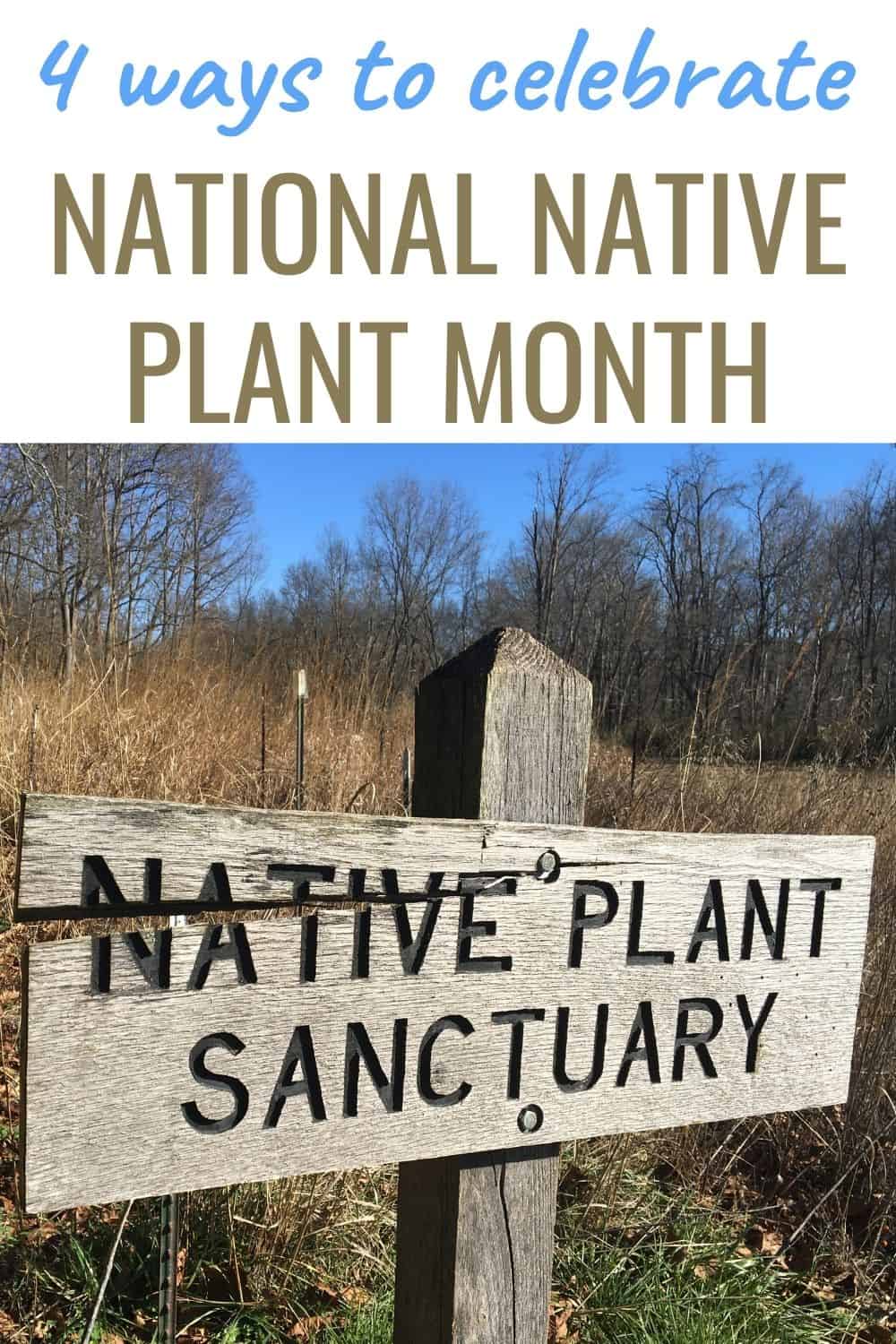As gardeners, we find great joy in discovering and introducing new plants to our outdoor (and indoor!) spaces, but I also find it remarkably fulfilling – and exciting – to narrow my search to plants endemic to my area. Nature uses a rich palette to paint beautiful landscapes, and we certainly can’t go wrong mimicking this natural design. More than 17,000 plants are native to the U.S., with some growing only in a specific state or even county. This April, let’s celebrate this incredible local diversity with National Native Plant Month!

History of National Native Plant Month
Not much information exists yet on National Native Plant Month because it is a brand-new designation. On March 25, 2021, the US Senate passed a resolution to make April National Native Plant Month and recognize “the benefits of native plants to the environment and economy of the United States.”
Why celebrate National Native Plant Month
If the rich diversity of our native flora isn’t enough to convince you to celebrate it during National Native Plant Month, there are many other reasons. Aside from their inherent value, the most important benefit of native plants is probably their support of native wildlife.
Mammals, birds, and other animals benefit directly from native plants as well as from the insects that also feed on them. Speaking of insects, native wildflowers provide an important source of nectar for bees, butterflies, and other pollinators. Many of these insects also pollinate food crops.
Each native species fills an important role in its ecosystem, and if one disappears, its absence affects more threads of the web of life than we might realize. As wild spaces are overrun with invasive species and diminish in favor of development, it becomes increasingly important to plant these native species and support local biodiversity whenever and wherever we can.
In addition, native plants are adapted to the local soil and climate, making them some of the lowest maintenance plants you could add to your landscape. They require little to no supplemental watering once established, will never need to be covered or brought inside for the winter, and will come back every year.
How To Celebrate National Native Plant Month
1. Learn more about native plants

No matter how much (or little) you know about native plants, there is always more to learn. Celebrate National Native Plant Month by discovering more about the natural landscapes around you. The North American Native Plant Society (nanps.org) and National Wildlife Federation (nwf.org) websites are great places to start. Local native plant societies and arboretums are also excellent resources.
2. Plant a pollinator garden

For a more hands-on approach, convert a flower bed — or, better yet, a section of lawn — into a pollinator garden. Sunny sites with well-draining soil tend to be best, but there are native plants for every type of soil and amount of sunlight. So if your landscape tends toward wet and shady, simply look for native species that suit those conditions.
Look for species native to your specific region, and don’t forget to include caterpillar host plants as well as vibrant wildflowers. Whether you plant seedlings or seeds depends on personal preference: seedlings are more expensive but will fill in space more quickly, whereas seeds cover more area for less money. Of course, you can always take a hybrid approach and plant a little of each!
Arboretums and other local organizations sometimes have native plant sales, and you can also ask your favorite nursery or greenhouse if they carry native species. Seeds, of course, can be purchased online. Be wary of wildflower mixes, though, as they don’t always contain native plants exclusively.
3. Replace nonnative plants
If a pollinator garden seems a bit overwhelming, know that you don’t have to dedicate an entire section of your garden to grow native plants. Instead, decide what seems manageable for you and start there.
You can plant native species anywhere in your landscape! When you want to fill in a gap or replace an unsightly bush, look first for native options. Redbuds and dogwoods, for example, are beautiful ornamental trees, spicebush produces lovely fall foliage and bright red berries, and myriad wildflowers offer a rainbow of color options.
To go a step further, research some of the plants in your garden and find out whether you inadvertently planted any invasive species. If you find that you have, look for a native plant that might make a good substitution, then take steps to replace the harmful plant with a helpful one.
4. Go on a nature walk

A nature walk can be as simple as strolling through a nearby natural space on your own and taking time to notice and appreciate the many different types of trees, shrubs, vines, and herbaceous plants in the landscape. If a particular plant catches your eye, take a few photos and look it up when you get home.
Alternatively, you can participate in a guided nature walk to learn how to identify some of the plants endemic to your area. These are often offered by local conservation organizations, arboretums, and parks. Many gardens and arboretums also have plants labeled so visitors can take a self-guided tour if they prefer.
However you choose to celebrate, I hope you enjoy exploring our incredible native flora and have a wonderful National Native Plant Month!



